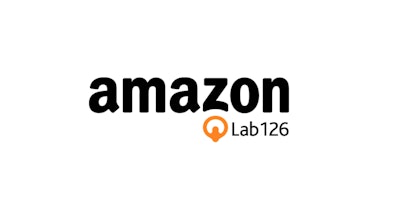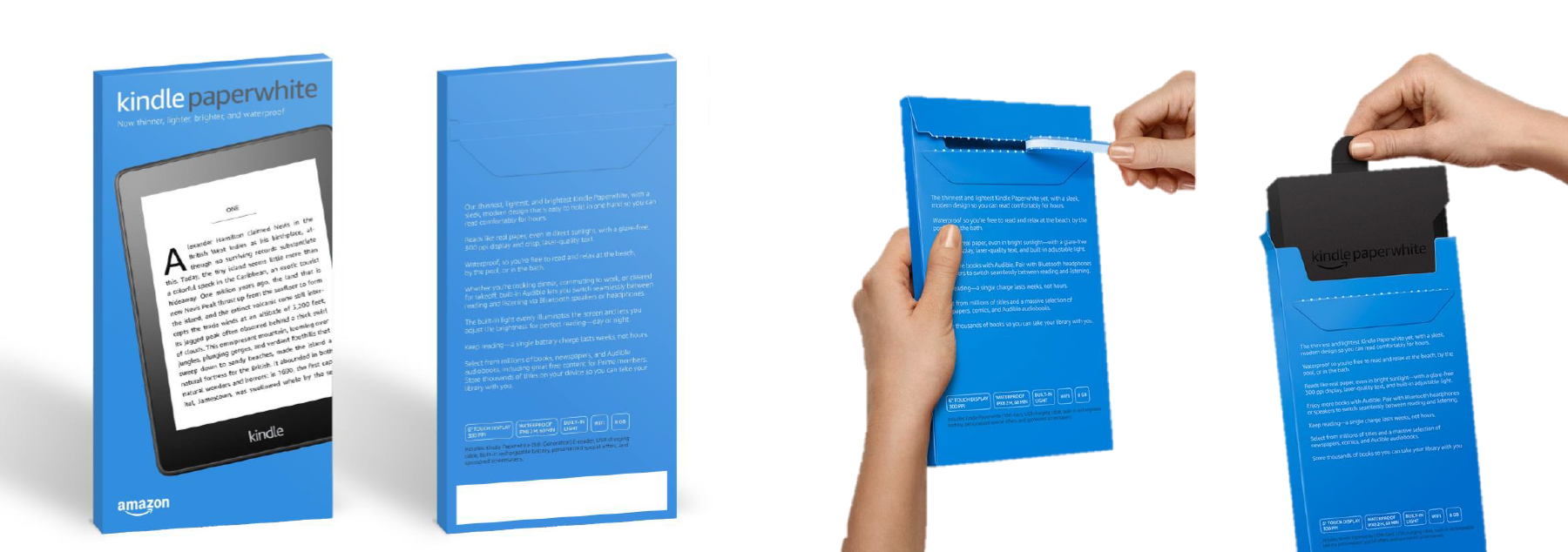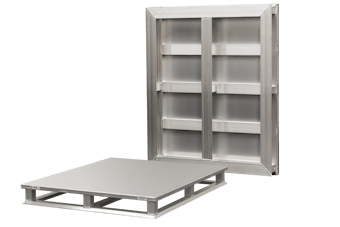
The first Kindle launched in November, 2007, and sold out in 5 ½ hours. There are now over 5 million eBooks available, and the Kindle is on its 10th generation.
According to Katie Exum and Gary Dong, Packaging Engineers at Amazon Lab126, Kindle packaging has evolved over the years, from retail-forward, to e-commerce-friendly, and back again.
Exum and Dong spoke at ISTA European Packaging Symposium in Amsterdam last week, providing a case study of the 2018 redesign. They said there were seven challenges presented to the new design: ability to fit mail slot delivery; more units per load; lower cost; less material; brand alignment; product protection; and, “customer delight.”
Because Amazon Lab126 was already starting out with what Exum and Dong referred to as a “robust product” that had withstood rigorous testing, the design team worked with the following three tenets: easy unboxing of primary packaging; a “less is more” philosophy; and, the use of paper-based packaging.
The team came up with the “Boxelope,” a paper package with slim design and a satisfactorily loud pull-strip opener, which could be mailed in a padded envelope. Because customers were sometimes surprised by the actual size of the product, a to-scale image of the device was included on the cover.

Exum and Dong said it was then time to convince the internal stakeholders of why the change to the Boxelope was a good idea, and cited the following reasons:
- The new design is socially responsible, with material savings providing a 30% lower annual cost.
- 1st generation Kindle packaging was nearly 300 grams, down to less than 50 grams with the 10th generation Kindle Paperwhite.
- 1st generation Kindle used 8000 trees per million units, down to 1000 per million units with the Paperwhite.
- Unit load density – 72% more units per pallet.
- Delivery costs – lower costs through alternative delivery methods such as a padded mailer, vs. small parcel packaging of 2017.
Global customer studies of the new packaging reflected positive views such as shelf differentiation, a positive opening experience, green credentials and sleekness of the product.
There were also some negative reactions, however, including a lack of customer perceived cost savings, missing the ability to re-seal the package after the strip had been pulled, and, product size misjudgment.
Exum and Dong cited the following three keys to implementing bold global packaging changes:
- Know your product fragility and avoid over-engineering the packaging.
- Build a business case with global perspective.
- Take advantage of opportunities to showcase the packaging innovation and educate the customer on the benefits.
Amazon Lab126’s products include Kindle, Fire, Amazon Dash, Amazon Echo and Fire TV.
For more information on the ISTA European Packaging Symposium, click here.
Learn more about packaging solutions at the co-located PACK EXPO Las Vegas and Healthcare Packaging EXPO, September 23-25, 2019 in Las Vegas, NV.





















